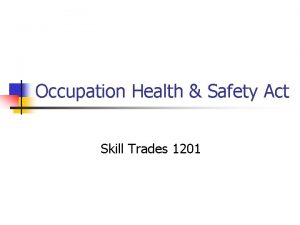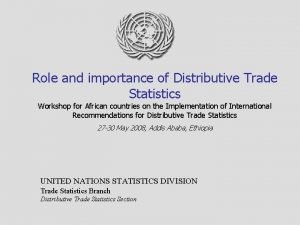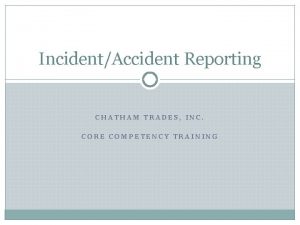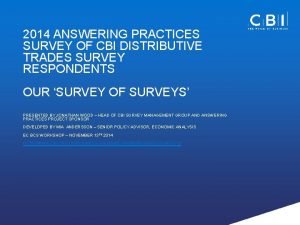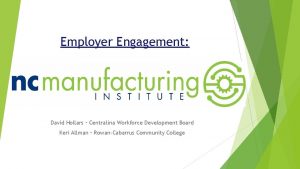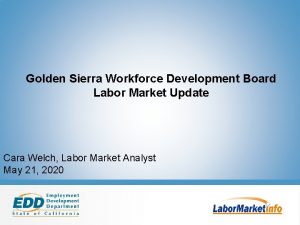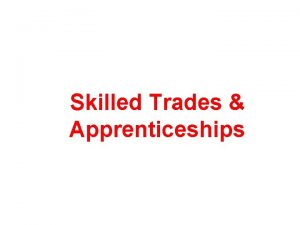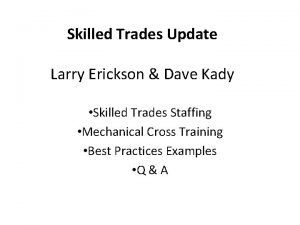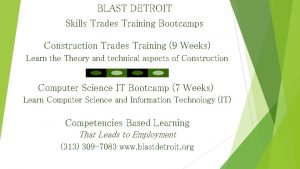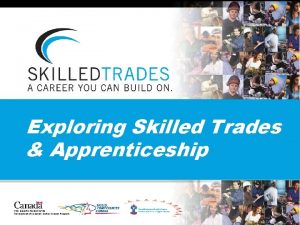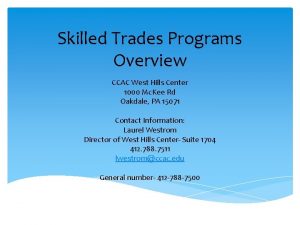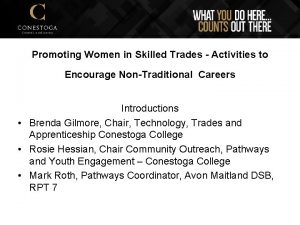Workforce Development Partnerships Zachary Morris Energy Skilled Trades










- Slides: 10

Workforce Development Partnerships Zachary Morris Energy & Skilled Trades Business Service Manager

About Workforce Development • 600 Regionally controlled, Workforce Investment Boards throughout U. S. with public/private-sector oversight • 25 Michigan Works! organizations throughout Michigan overseeing 100 Service Centers • Provide training resources and job placement to jobseekers • Provide staffing/HR services to employers

About • We are a 501 C-3, non-profit workforce development organization, serving Berrien, Cass and Van Buren counties in Southwest Michigan • OUR MISSION – To provide a skilled workforce to meet the needs of employers • WHO WE SERVE – 2, 000 employers with H. R. and staffing services – 34, 000 jobseekers annually (up from 20, 000) • 2, 361 are youth (ages 14 -21)

History of Workforce Development Boards Mixture of government and non-government entities • Government-sponsored activities historically focused on unemployed and economically disadvantaged – First labor programs in U. S. started during Great Depression • Federal Manpower Development Training Act of 1962 – First nation-wide publicly provided training program • Comprehensive Employment Training Act (CETA) of 1970 s – Introduced local advisory councils • Job Training Partnership Act (JTPA) of 1982 – Focused training programs on employer-demanded skills – Increased private sector participation on advisory councils to ensure local business needs

History of Workforce Development • Personal Responsibility and Work Opportunity Act of 1996 – Federal block grants to fund income support for low-income households – Head of household must find work within specified time • Workforce Investment Act (WIA) of 1998 – Emphasized job-search assistance and job-readiness training with goal of increasing employment, retention and earnings Focus changed in 1990’s from “Welfare to Work”, to employer-driven skill development

Industry Sector Approach Tri-county labor market projections indicate labor need in 4 main industries: – Advanced Manufacturing – Healthcare – Hospitality – Energy/Skilled Trades All training resources are allocated to train the labor pool for jobs within these four industries Career Guide

Business Services Department dedicated solely to serving employers by providing: – H. R. and staffing services – labor market intelligence – Incumbent Worker Training grants (IWTs) – Regional Skills Alliances (RSAs)

Jobseeker Programs and Services • Skill level and ability assessment • Training opportunities (workshops, etc. ) • Job search and placement assistance • Career counseling • Labor market information • Adult, dislocated workers & youth • Employment services • Adult education • Post-secondary vocational education • Vocational rehabilitation • Welfare to Work • NAFTA Transitional Adjustment Assistance • Veterans Employment and Training Programs • Community Services Block Grant • Employment and training programs administered by the U. S. Department of Housing and Urban Development • Unemployment Insurance • Title V of the Older American Act • Trade Adjustment Assistance

Steps Ahead Determine needs • More skilled workers? Retrain existing workers? New equipment? Technology? Access to labor market trends? Form partnerships • Work with local workforce development organization, industry peers, local training providers, community organizations and key stakeholders • Support funding and training that develops skills of emerging workforce

Questions? miworks. org 1. 800. 533. 5800
